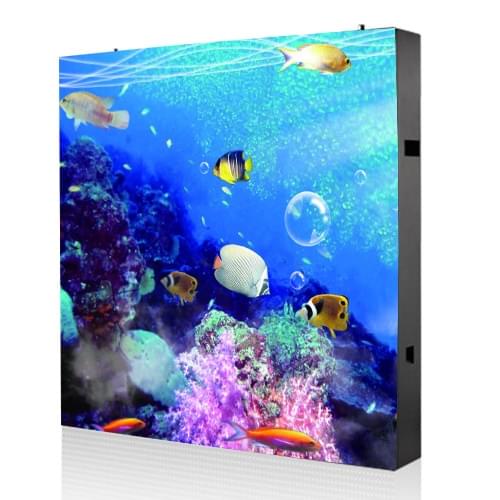DYNAMIC COMMUNICATION IS MORE IN LINE WITH THE EVOLUTION OF THE OFFER
In general, food businesses are subject to very different product timelines. On the one hand, fresh produce must be sold quickly. Conversely, dry products can be stored longer, but require long-term stock control. In addition, the frequentation of these stores is more usual, regular unlike certain brands more linked to exceptional or one-off purchases.
Offer optimized visibility in all seasons
Food stores depend on the seasonality of goods, especially since the French are increasingly sensitive to it. This is why merchants change their communication with the seasons. However, although regular, seasonality presents hazards.
However, unlike traditional display solutions, SMD Screens do not require the production of physical media and therefore less time. The dynamic display, therefore, offers the possibility of communicating effectively during the right sales period. Thus, thanks to the screens, it is easier to communicate not only according to the season but also according to the real conditions.
Be more responsive to business opportunities
In the same idea of responsiveness, food businesses must be able to react to the various commercial opportunities available to them. Indeed, the consumption of everyday products is strongly influenced by the context such as the weather, events, or, as we have recently observed, containment measures.
For example, the first cold weather is coming. This is an opportunity to communicate about the raclette and Savoyard offers. Or it’s the final of a major football championship. It’s time to highlight products dedicated to parties and aperitifs.
Their ease of updating is one of the great strengths of digital screen solutions. It is thus possible to change the messages displayed instantly as many times as desired. Targeted and contextualized communication is a maximized return on investment.
Communication as an aid to inventory management
This speed of updating the message makes it possible to go even further and to react in real-time. It is thus possible at any time of the day to inform about new promotional offers. This makes it possible to be responsive to the state of stocks, in particular fresh products and short consumption dates.
This is all the more interesting as this anti-waste approach is highly appreciated by consumers. Thus, the brand benefits from a double advantage, on the one hand, fewer losses thanks to better day-to-day inventory management, and on the other a more eco-responsible image.
DISSEMINATE STORE INFORMATION ON ITS ADVERTISING SCREEN
In-store communication does not only focus on the dissemination of promotional offers. Certainly, they can boost sales, but this is not the only important point. Indeed, a brand has every interest in seeking to create a relationship with the customer and build loyalty.
This is the role played by the dissemination of information in addition to disseminating news or prevention messages. Thanks to an advertising screen, it is possible to display these messages because of a very large number of visitors at the same time.
Moreover, thanks to their dynamism, these are more attractive and can be multiplied. Of course, the advertising screen is not necessarily either a promotional screen or an information screen. It can combine roles to better serve consumers as well as the brand.
THE SCREEN AT THE SERVICE OF THE IMAGE AND THE CUSTOMER EXPERIENCE
If we go back to the previous elements, we can see that they all have one thing in common, the improvement of the customer experience. Indeed, to serve the commercial interests of the brand, the main function of the in-store advertising screen is to facilitate the customer’s journey while seeking to make the shopping experience more pleasant.
On the one hand, the promotional messages inform and guide him. On the other hand, the spots broadcast entertain him. Indeed, screens and video are part of our daily lives. So we are more naturally attracted to them. Consumers are also in favor of using digital tools in stores.
An FIFG study recently demonstrated that 69% of customers consider that a connection point of sale is more attractive, and 61% welcome initiatives for a more fun shopping experience.
Beyond the shopping experience, these user favors for the screens also have an impact on the image. Indeed, a brand that uses LED screens benefit from the image they bring. The store then appears in the eyes of visitors, as more modern, more dynamic, and more invested. So much positive appreciation which in the long term makes it possible to retain the customer.


No comments yet